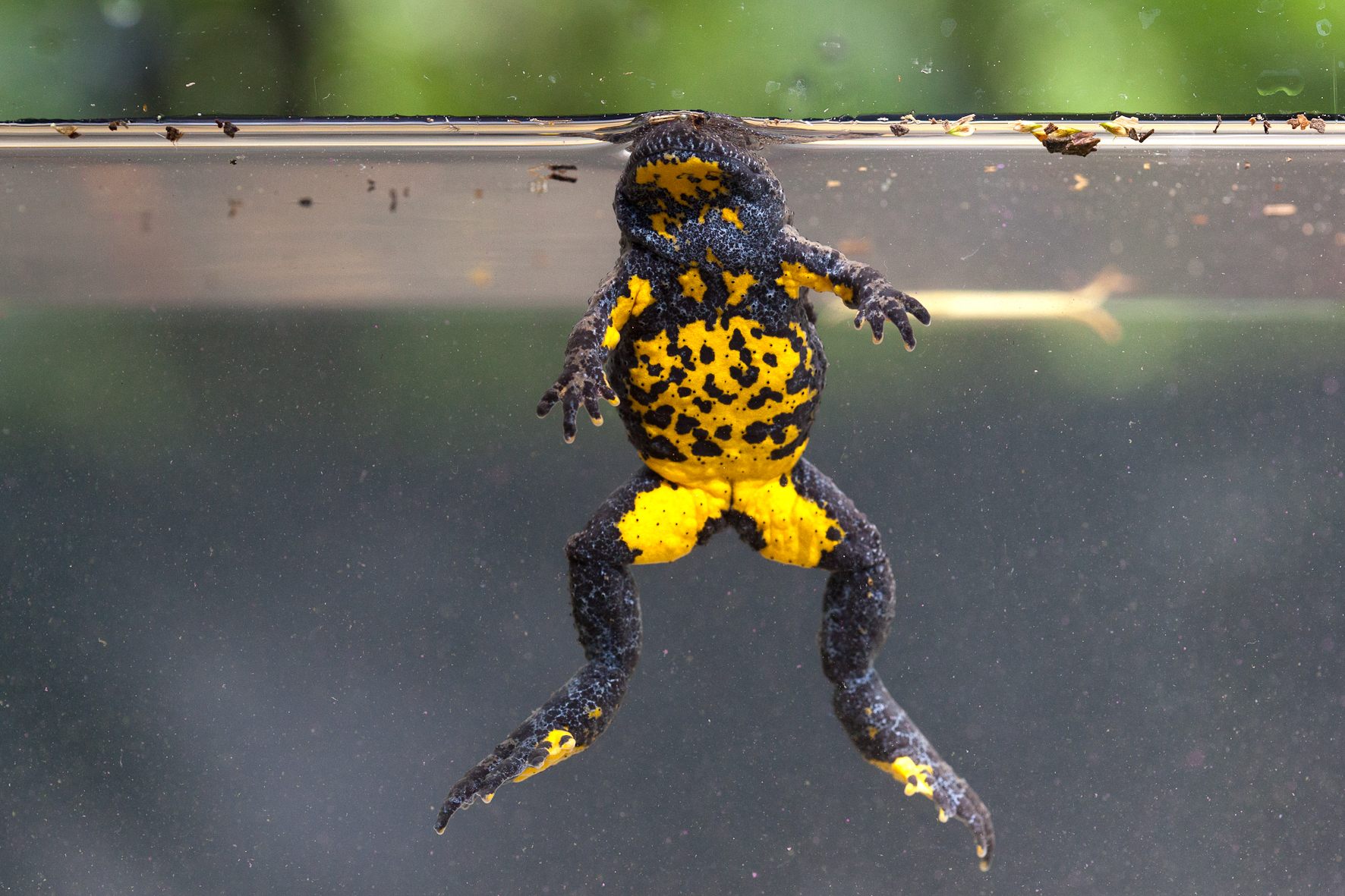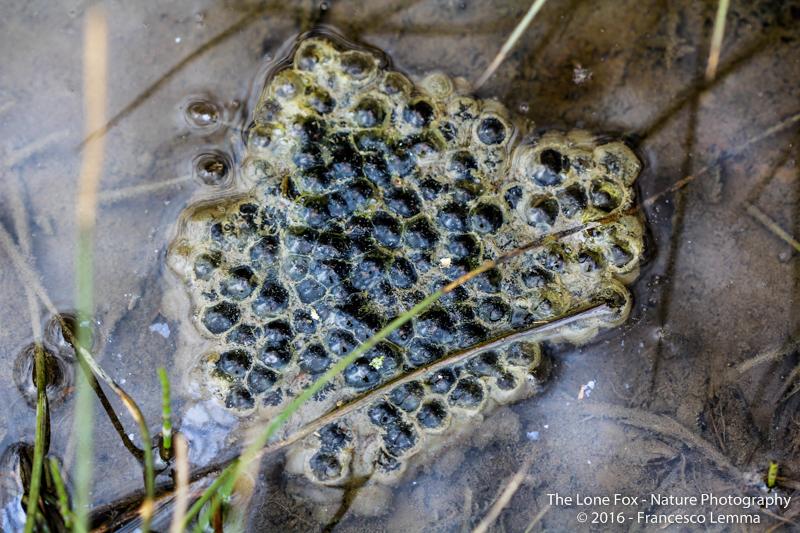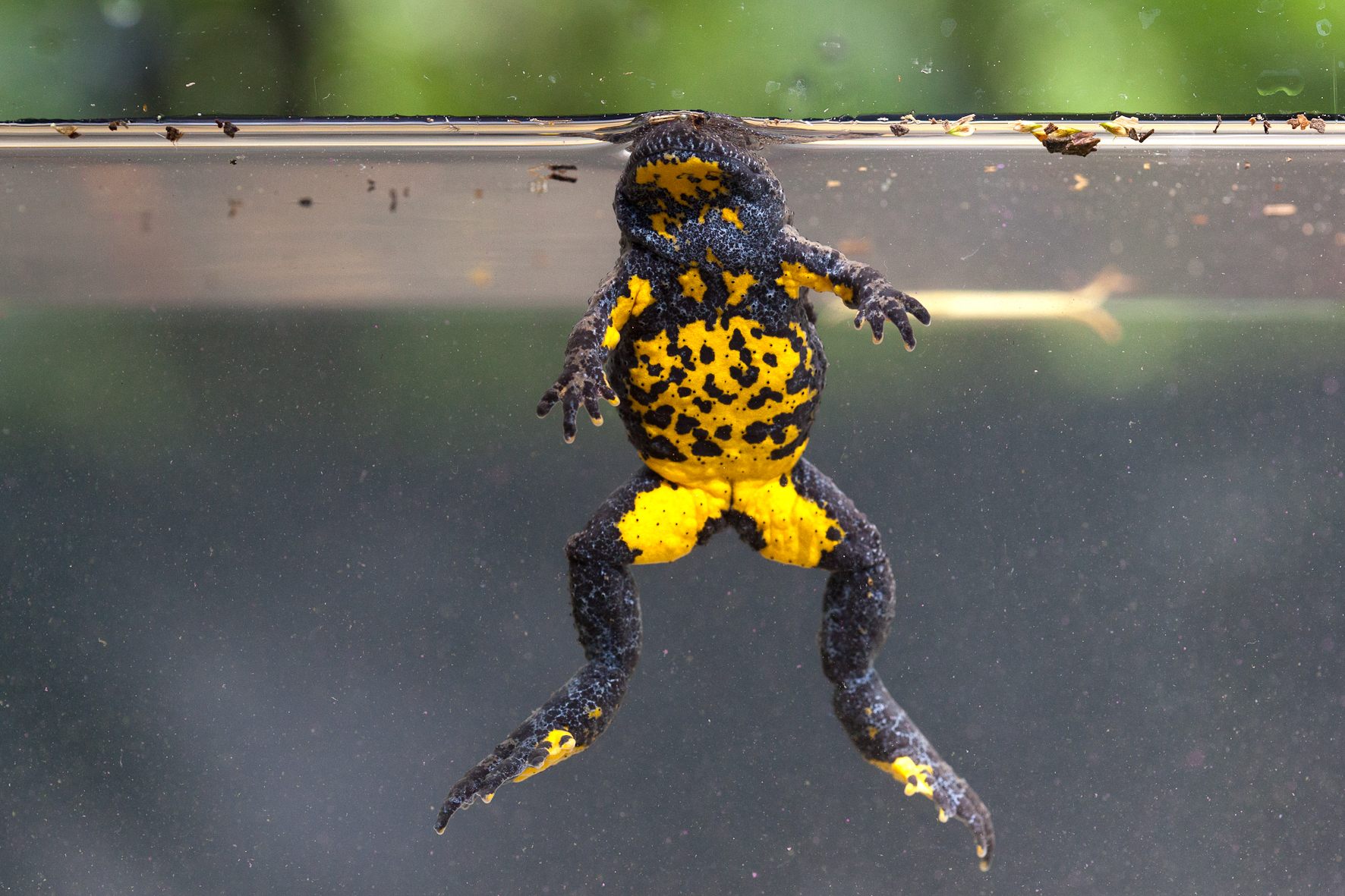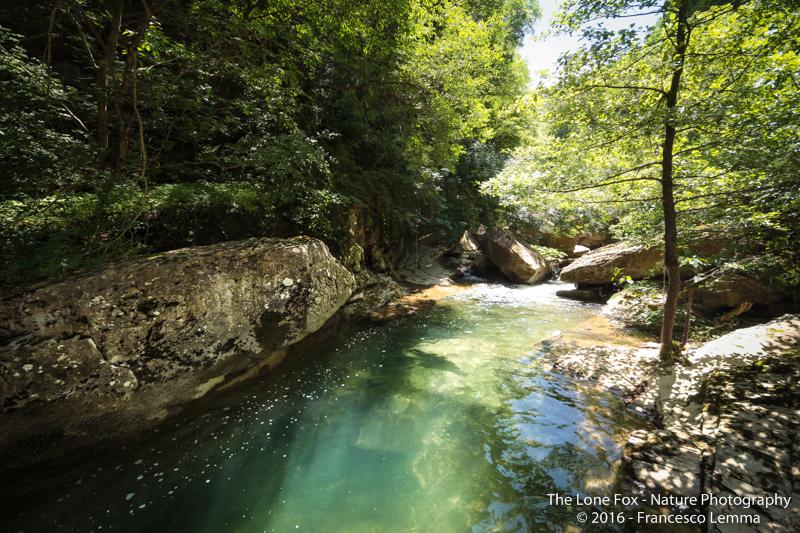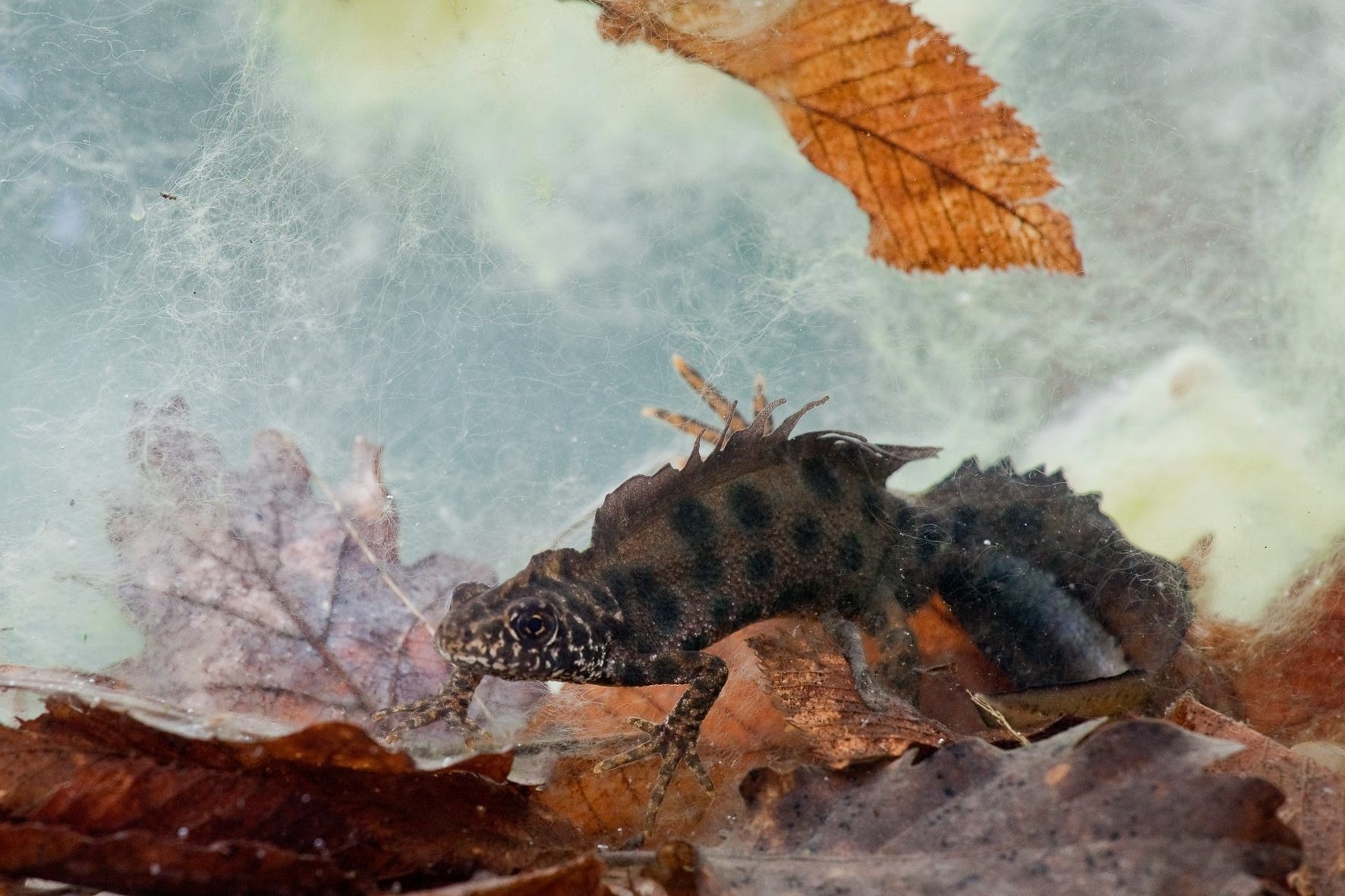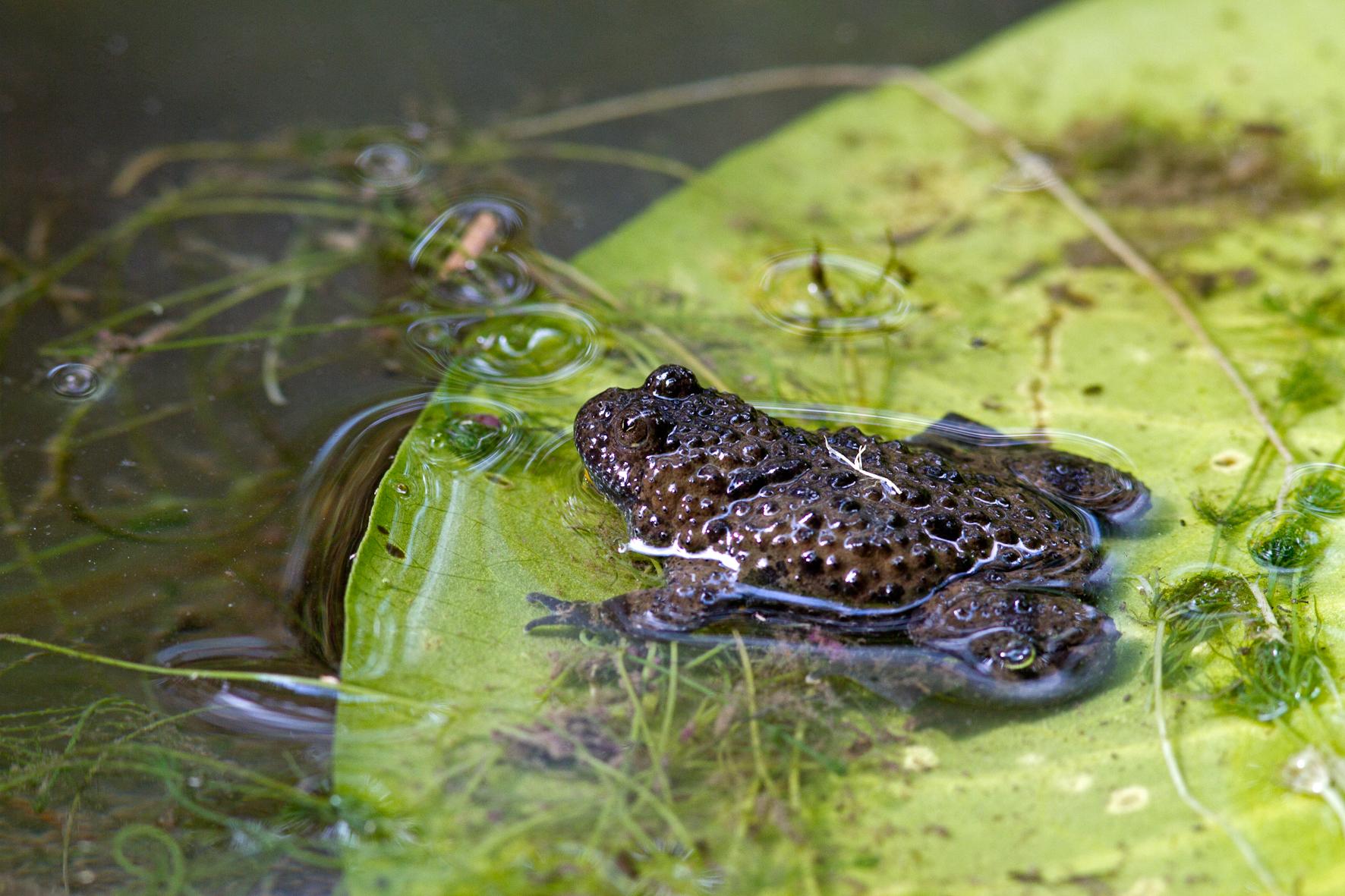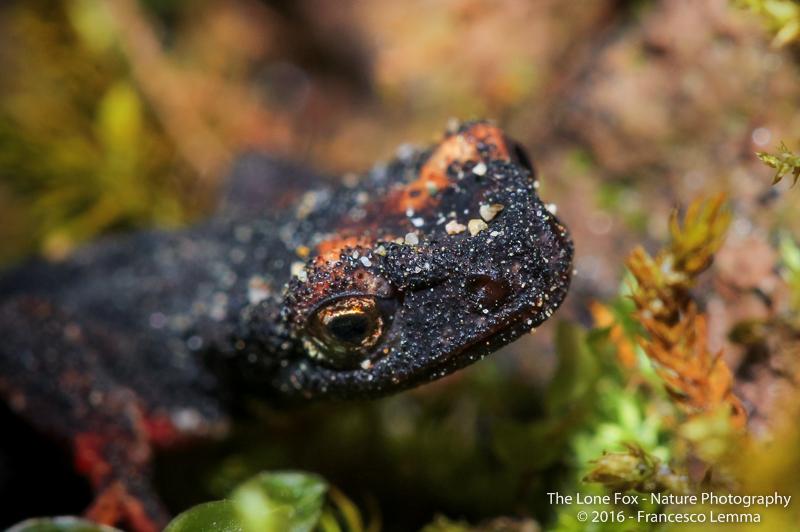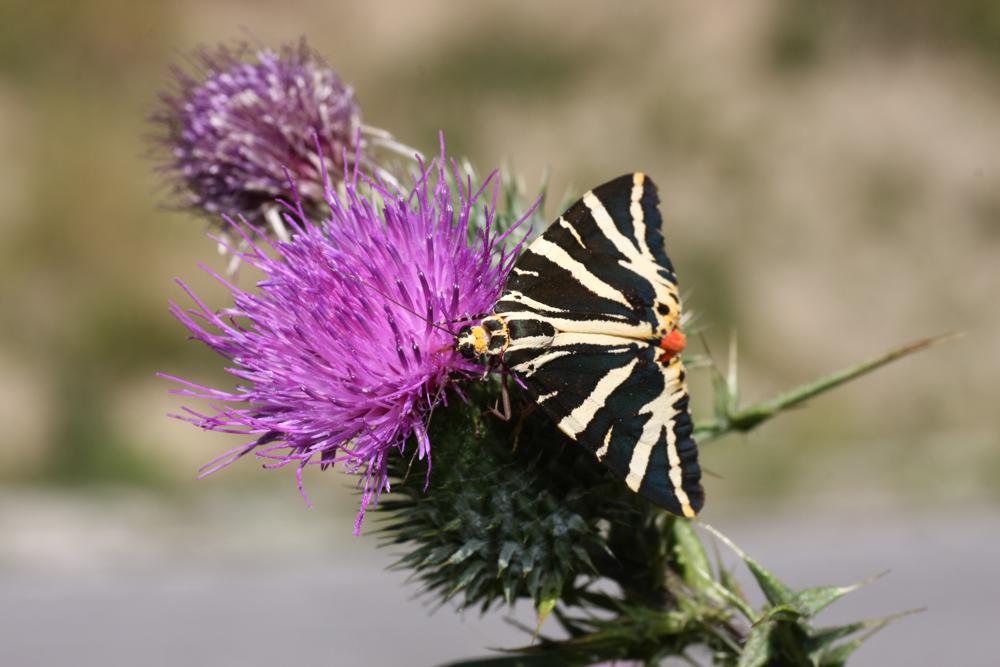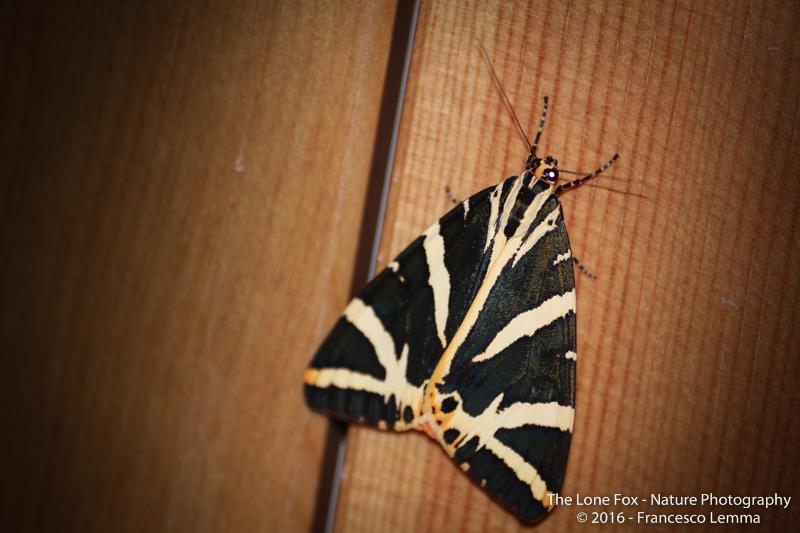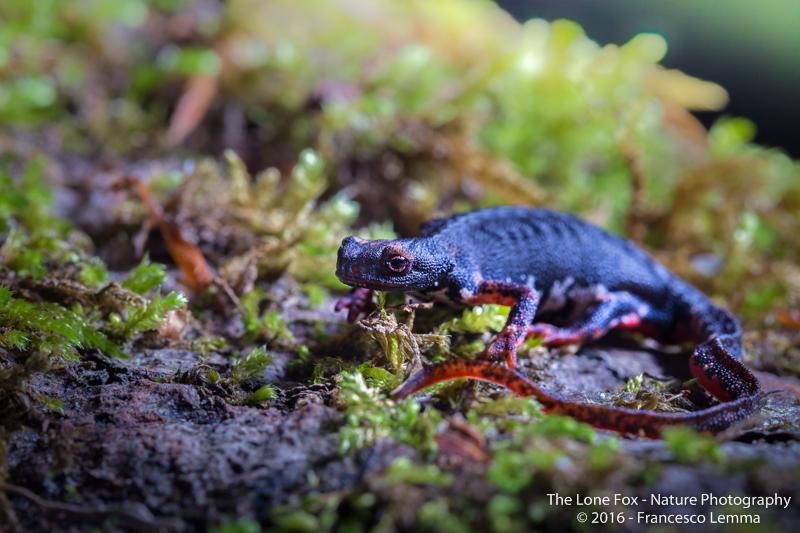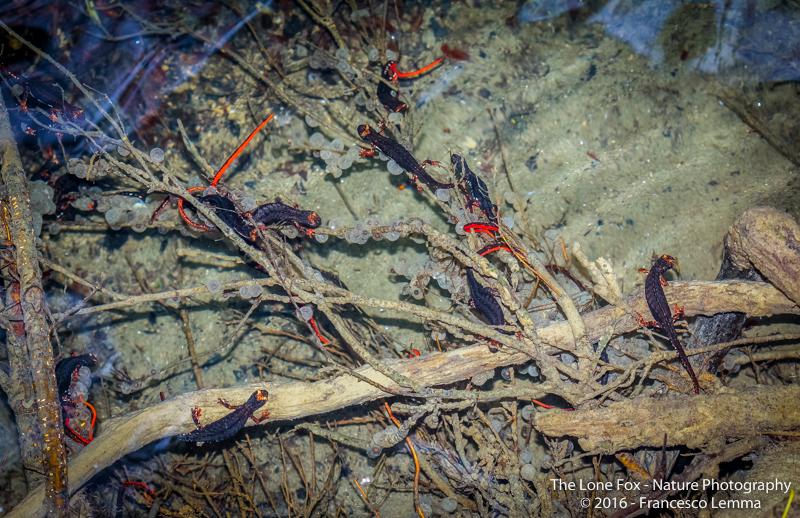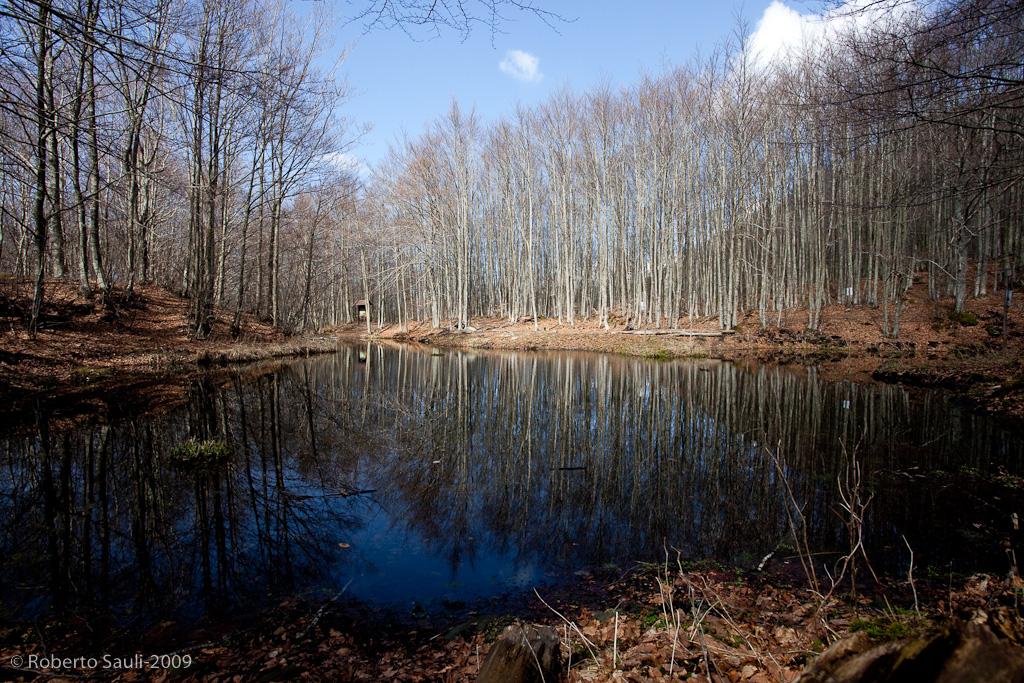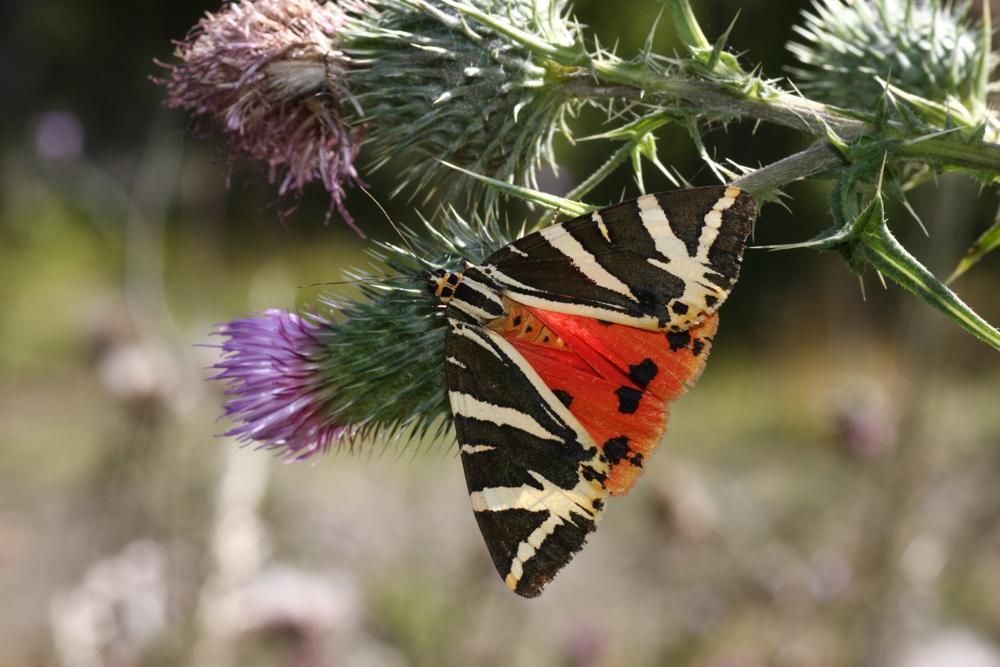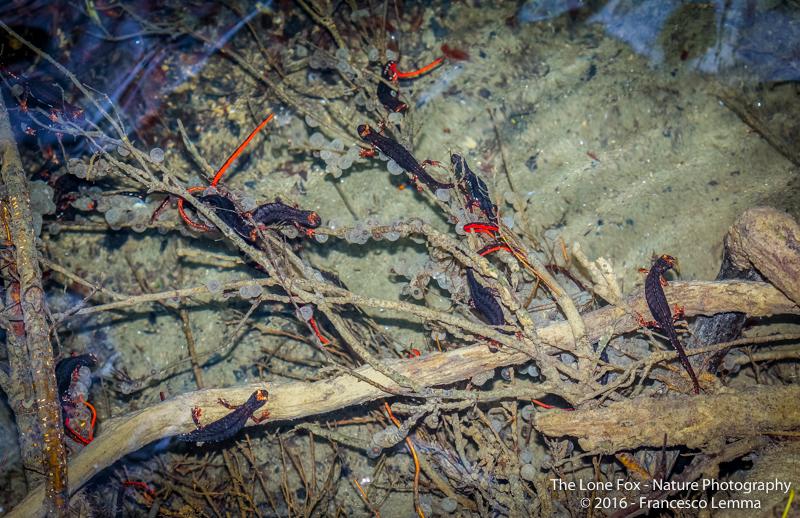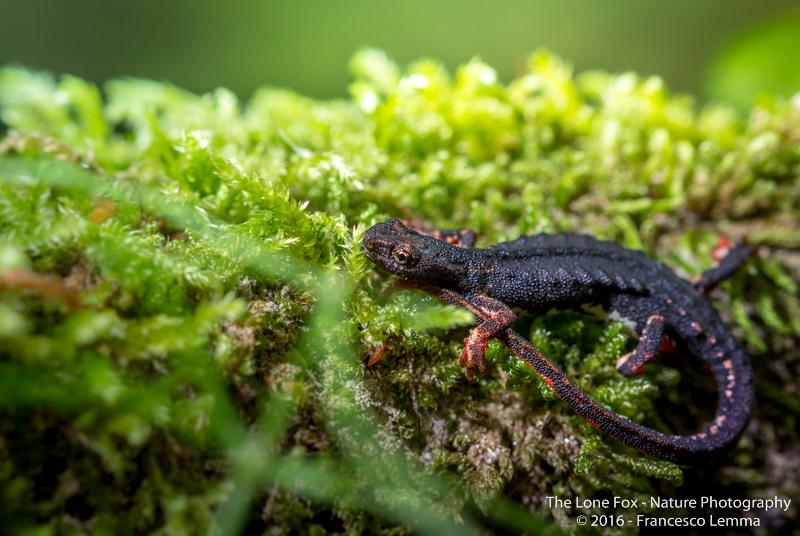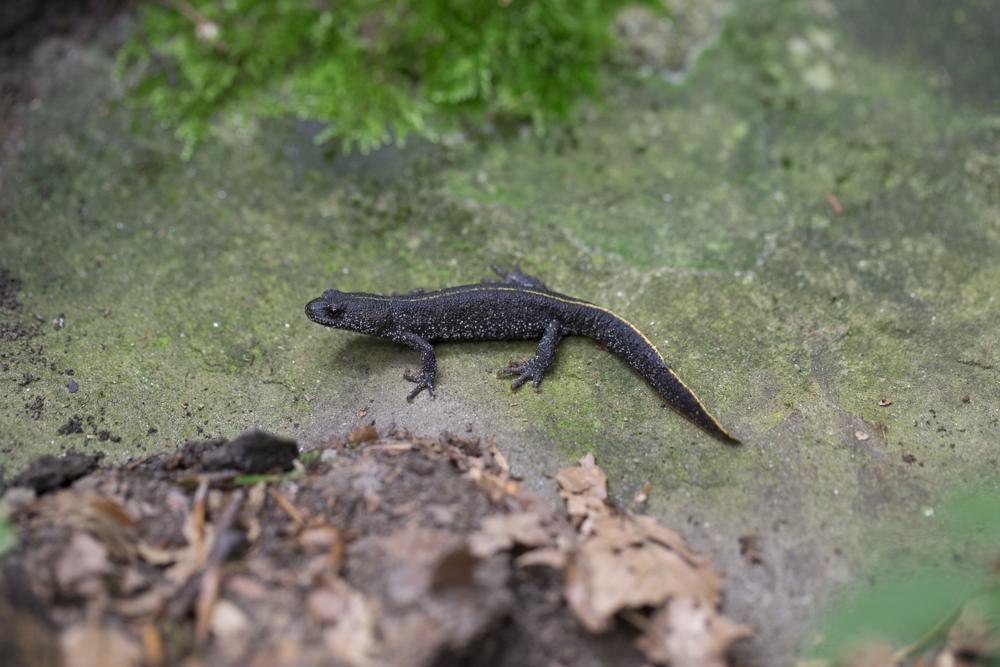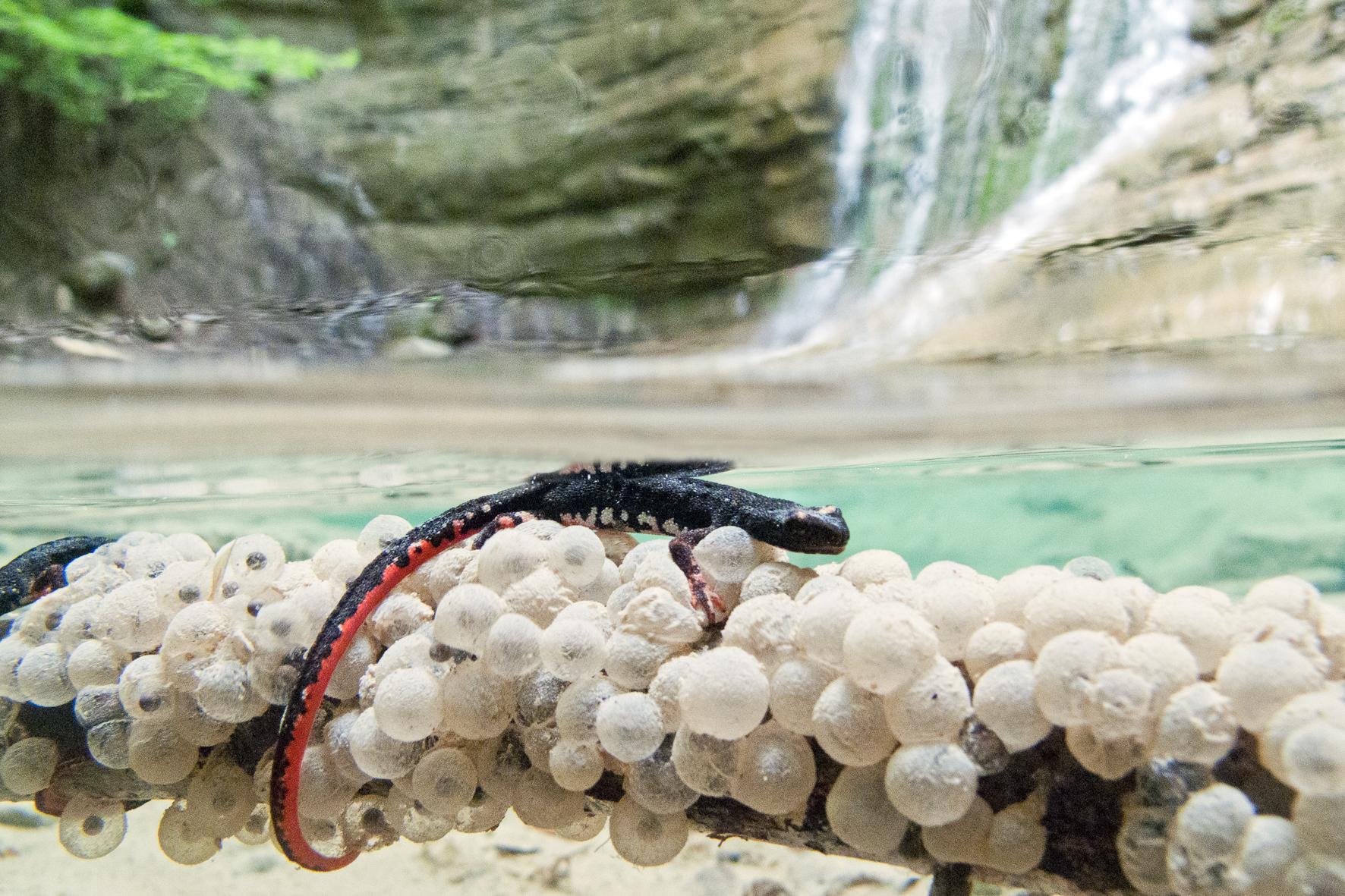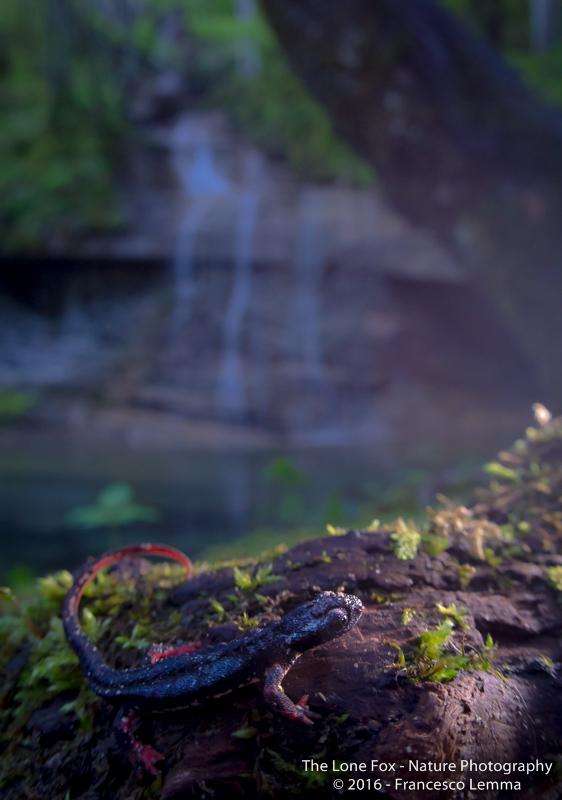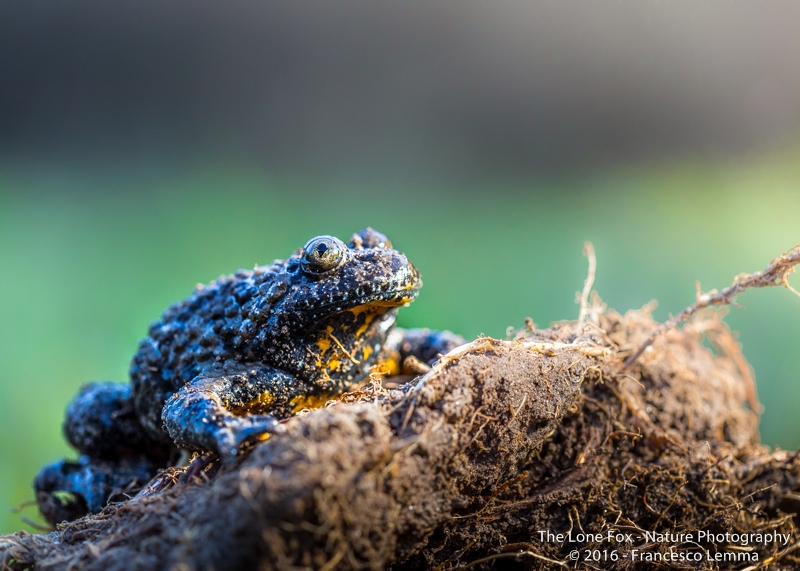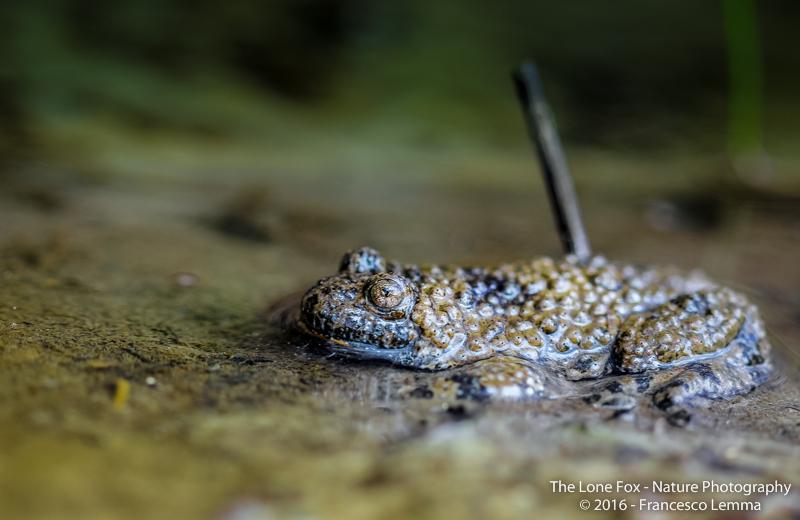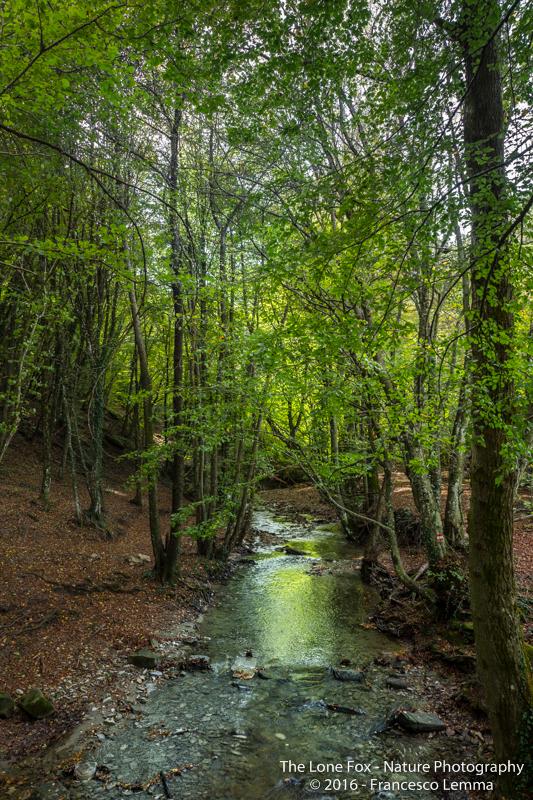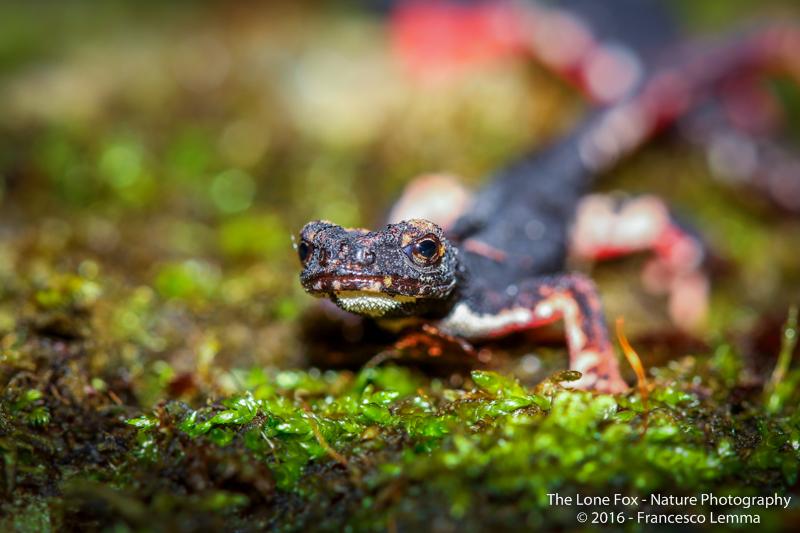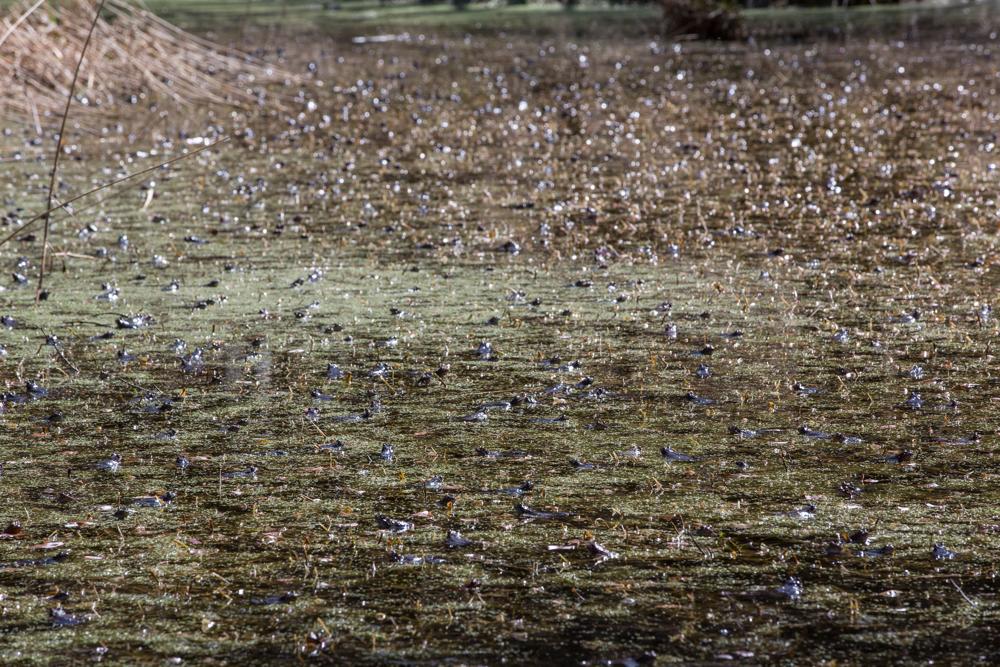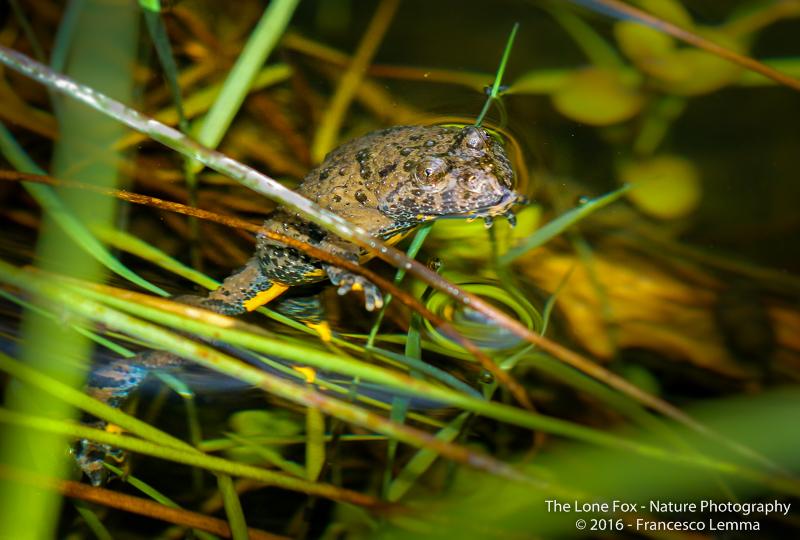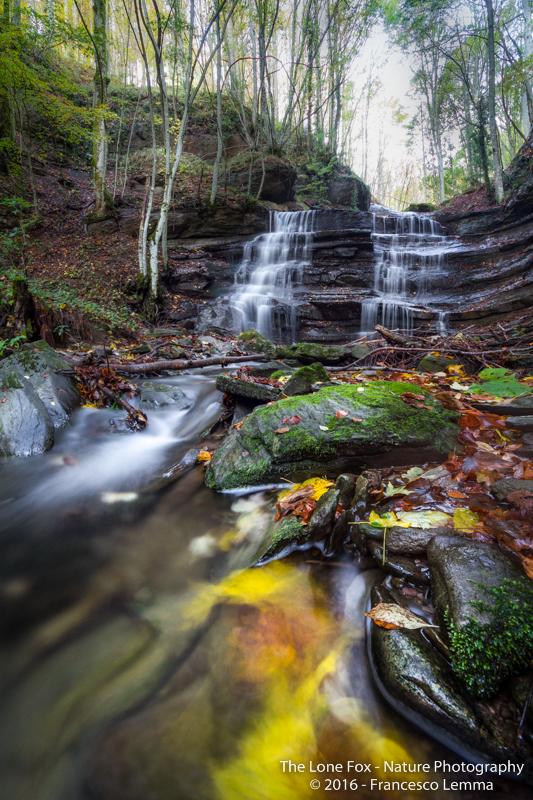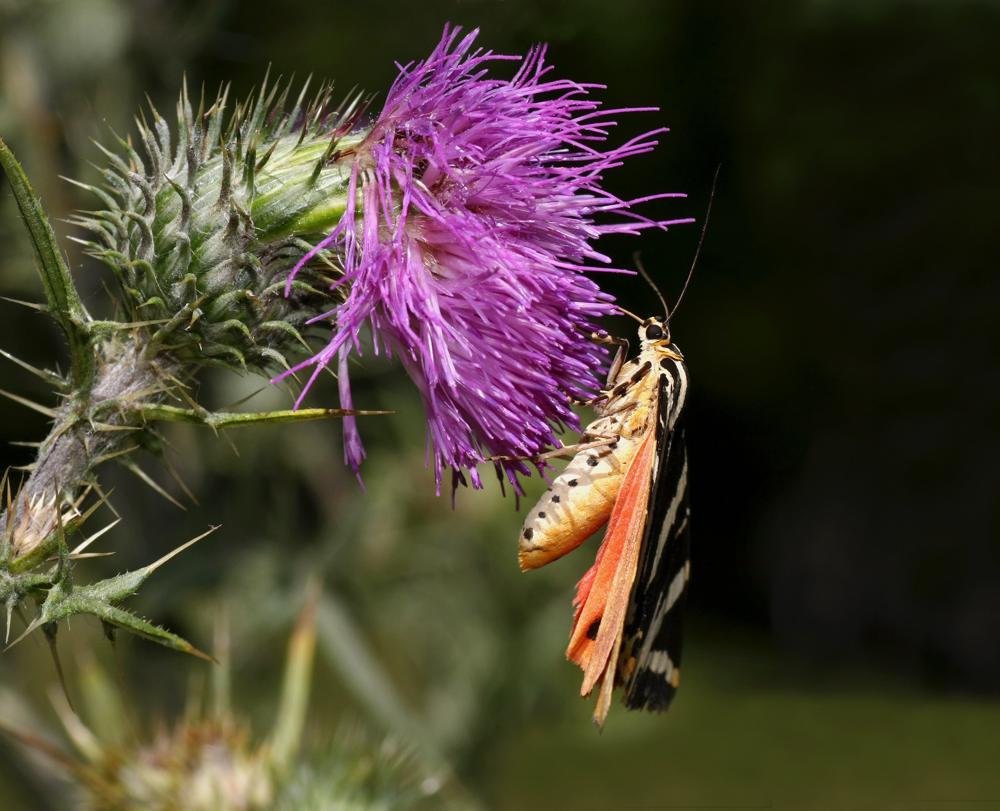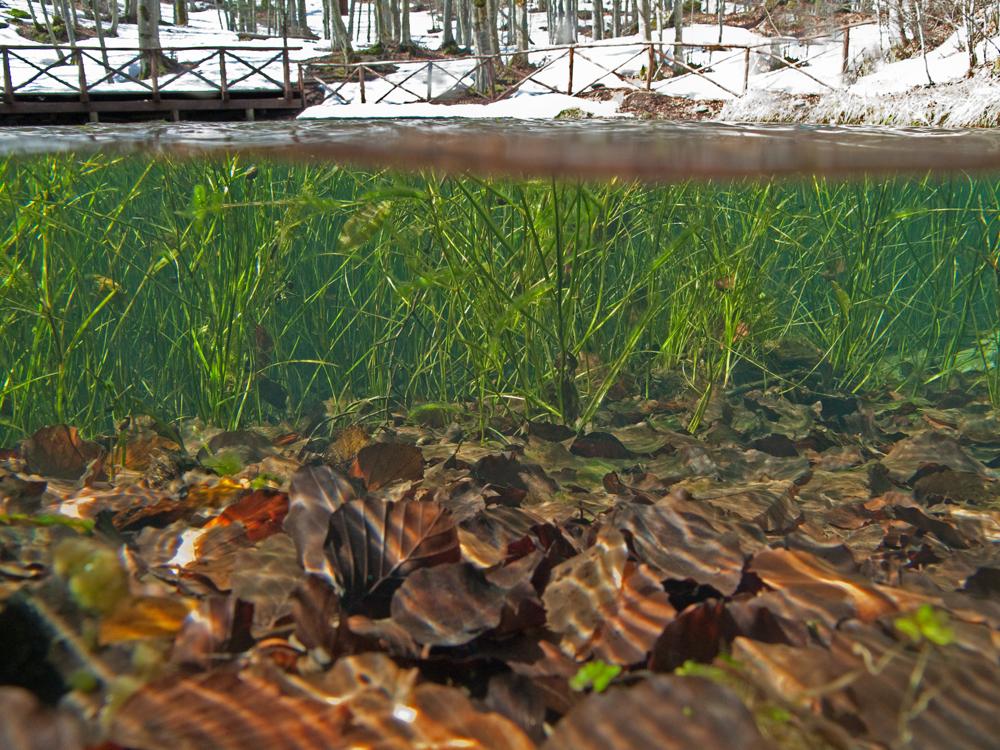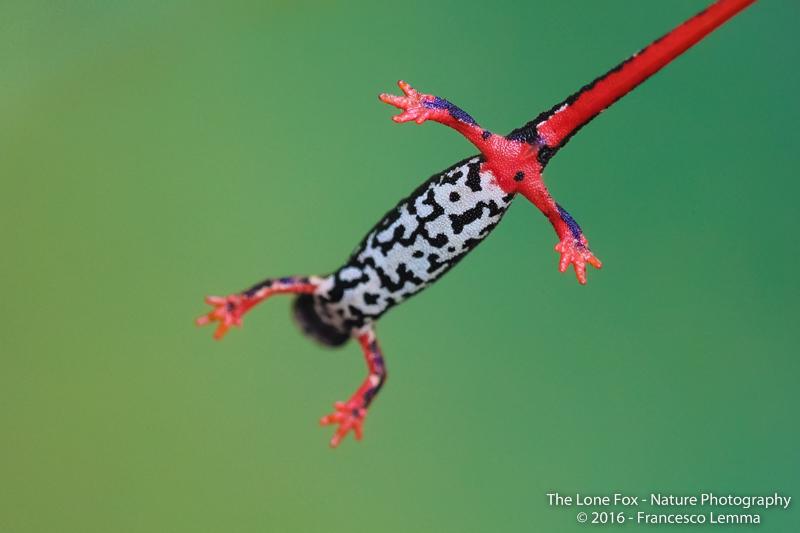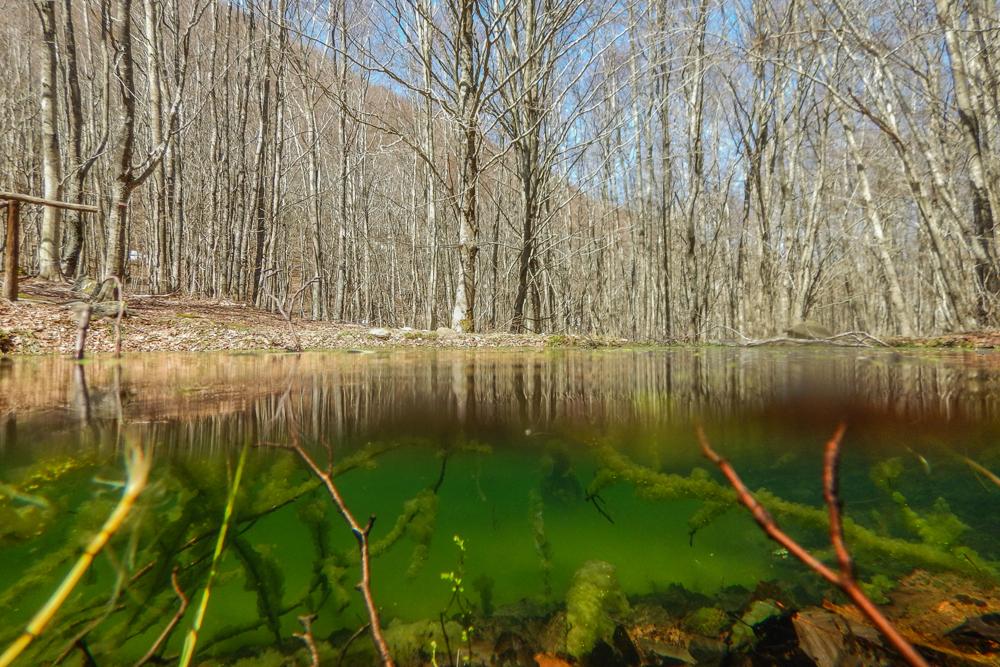|
Yellowbelly toad. Foto: Roberto Sauli |
Anural species of amphibian endemic to Italy, from central part of Region Liguria to Aspromonte, it rarely exceeds 5 cm length, stopping on average at 4 cm. It has a warty grey or brown back, , whilst the underside has bright yellow-orange spots. Besides this characteristic, it is also named after the typical sound it emits during the breeding season, which consists of a “uuh... uuh... uuh...” , repeated even over 40 times in one minute.
The species in included in Annexes II and IV of DC 92/43/CEE, listed in Annex A of the Tuscan Regional Law 56/2000 ( L.R. Toscana 56/2000), protected in Region Emilia Romagna in agreement with the Regional Law 15/2006 (L.R. 15/2006) and regarded as “Endangered” by the IUCN..
Nel Parco Nazionale dIn the National Park of Casentinesi Forests, it lives at an altitude from 400 to 1000 mt and is active from the end of March; breeding starts at the end of April and goes on until the end of August. The breeding sites consist of small ponds and watering holes, sometimes also of portions of running streams among the rocks, always in sunny settings.
|
|
Even though the species can be locally considered as not rare, the vast majority of reporting within the Park refers to the side of Region Emilia-Romagna where the species seems to be very popular, whilst on the side of Tuscany – where it was spread as much as in Emilia Romagna in the past – reporting is now very low.
In the territories of the Park, the “Ululone Appenninico” (Appennine Ululone) or “Ululone dal ventre giallo” ( Yellowbelly Toad) is mainly threatened by the reduction of the reproductive environment: these areas were widespread in the past in the grassland areas, where the grazing activity characterized a mosaic structured land by alternating large forestry areas to grazing zones within the whole forest. This condition is now no longer present in the territory covered by the project, due to abandonment of the traditional farming practices which has led to natural and at times artificial conversion of the open spaces into forest or pre-forest formations. Because of this transformation of the territory, the breeding areas of the “ululone” are still present where agricultural and grazing activities are still carried out.
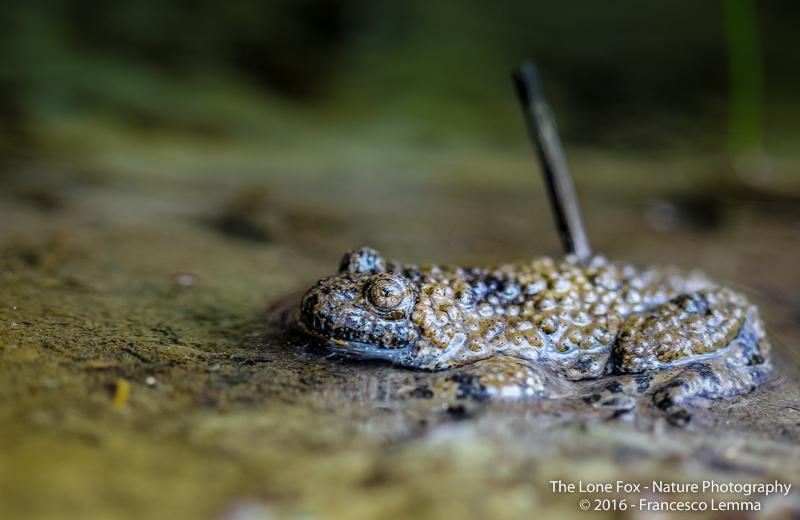
Yellowbelly toad. Foto: Francesco Lemma |
The conservation choice is therefore orientated towards the restoration of small moist areas within the still existing open spaces: these interventions shall be carried out by action C1 of the project; after construction and improvement of the potential habitats for the species, the ex-situ bred specimens shall be re – introduced (action C2).
Another critical factor for the species, at national level, is the pathogenic agent Batrachochytrium dendrobatidis, which seems to have an impact on some of the populations (the presence of this pathogenic agent has still not been reported within the populations on the intervention territory).
Bombina variegata or Bombina pachypus?: the taxon Bombina pachypus was elevated to species level by Lanza & Vanni (1991) but many authors consider B. pachypus a sub-species of B. variegata (Hofman et al. 2007, Zheng et al. 2009, Fijarczyk et al. 2011).


